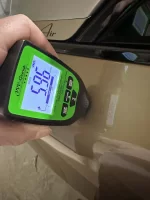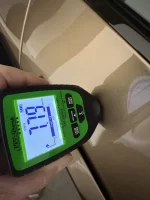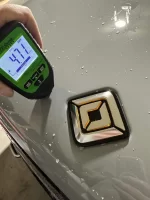- Joined
- Apr 8, 2022
- Messages
- 633
- Reaction score
- 444
- Cars
- Lucid Air Pure…eventually
1% to to get up to 70mph from zero sounds pretty excessive. Thats 1.1kwh for just a few seconds of driving.I scanned through his whole livestream of the range test. Before getting down to 4% SOC he had to exit/get back up to 70mph a total of 8 times while avoiding rain and construction. In this car, it loses a lot of kW accelerating from standstill to 70mph unless you do it super slow, like I’d guess 1% SOC is lost each time. I think the exits he had to take and then get back up to speed combined with a little battery degradation makes the results make perfect sense that he got “only” 435.5 miles. I think in Tom’s DE R test he only exited once if I remember correctly?
Worst (least efficient) case would obviously be using max acceleration to get up to speed. Since max power output is 611kw, and duration for 0-70 would would be about 3 seconds (a guess since 0-60 is 2.5) each max acceleration effort would consume 0.509kwh for the motors.
The cooling system would need to consume 100% of the amount of energy that the motors use to get close to 1% per acceleration (I don’t see it possible the cooling system could use an equivalent amount as the motors at full power)
I always skip to the ends of these videos to see the result, but since it’s a range test I assume they don’t use anything near full power for accelerating up to speed, so are never putting close to 611kw down (or taxing the cooling system). Also since each acceleration is due to a preceding deceleration, some of the energy used to accelerate back up to speed is offset by regen (maybe 30% or so?).
I think 8 gentle accelerations combined could account for 1% of battery (accounting for regen offset). I think the difference between OOS and TM range results is really down to the OOS car mileage degradation as you say, and perhaps (not knowing specifics about the TM route) greater elevation change in the OOS route. It’s a very gradual slope but still energy is needed to “lift” the 5,000lb car up 2,000 vertical feet… I may have done something wrong but I’m getting 3.7kwh as energy needed for this (although again, a good portion of this is offset by the outbound downhill leg, and the TM test would certainly not have had zero elevation variance).
Not sure how temperatures compared between the 2 tests. Also even small differences in head/side winds can add up over hours of driving. I guess another factor could be individual variance between cars’ drivetrain efficiencies ( was TM car a press car or borrowed from an owner like the OOS one).




